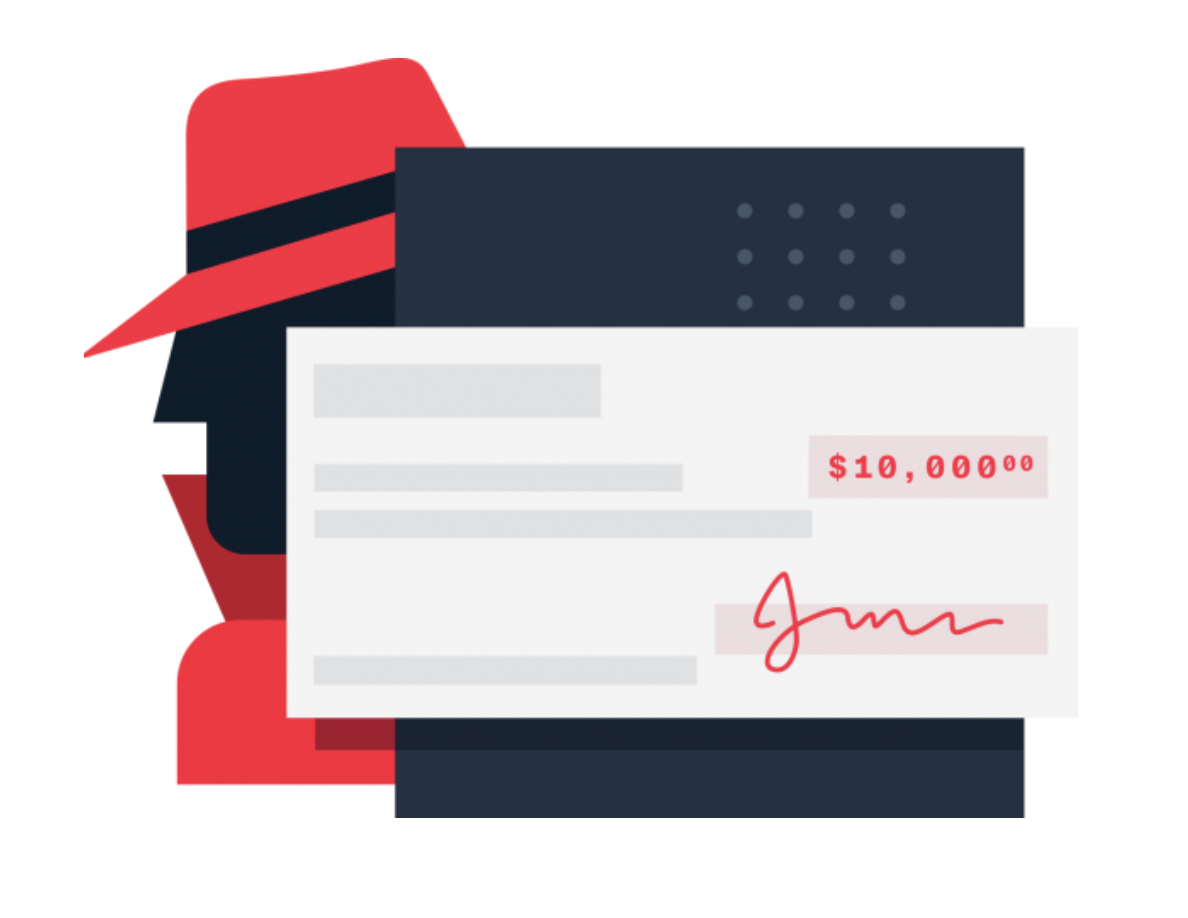 Check fraud is one of the most common types of fraud, accounting for about 35% of bank fraud, totaling billions of dollars every year. It continues to flourish and plague businesses and individuals alike, costing consumers about 1.2 billion dollars a year. Unfortunately, existing solutions aren’t doing much to solve this prominent issue.
Check fraud is one of the most common types of fraud, accounting for about 35% of bank fraud, totaling billions of dollars every year. It continues to flourish and plague businesses and individuals alike, costing consumers about 1.2 billion dollars a year. Unfortunately, existing solutions aren’t doing much to solve this prominent issue.
The lack of solutions to the problem has prompted Mitek to seek alternative ways to reduce the risk of check fraud. In this article, you’ll learn about trends in check fraud, the different types of check fraud, and how Mitek can help you avoid this security problem.
The current state of check fraud
A lot of people think that check fraud is a thing of the past. While credit cards and debit cards have significantly removed the need for checks, they are still the industry standard for business transactions.
We live in a digital age, and there are more tools to help with check identification than ever. Most of them work modestly well, yet the degree of false positives is relatively high and legitimate checks are flagged as fraudulent.
Current solutions tend to work in 90% of cases, but for customers who fall in the remaining 10%, their experiences are far from smooth. If a check is suspected of registering as a false positive, it requires an additional layer of analysis or security, making the process longer, slower, more expensive, and stressful.
Check fraud itself is ever-evolving as fraudsters seek new opportunities to find vulnerabilities within financial systems. Just as there are new ways to identify a fraudulent check, there are also new ways to falsify it. Some industry-leading solutions such as Early Warning Systems rely on account-level data to help them decide whether a check is legitimate or not, while solutions such as Orbograph or Parascript rely on image analysis.
Mitek’s solution innovatively merges these two methodologies, incorporating multiple levels of detailed analysis to provide the most accurate data-driven classification of whether a check is legitimate.
Deciphering the different types of check fraud
There are more ways to falsify a check than you might think. The three most prominent ways fraudsters try to pass off bad checks are synthetic, account failure, and forgery.
Synthetic - not a genuine check issued by a bank
Counterfeiting has continually been the most popular way to falsify checks. Whether this is caused by a stock mismatch, an accidental misprint, or something more malicious such as an invalid MICR or MICR manipulation – synthetic checks are pretty easy to decipher through intensive visual analysis.
Account failure - genuine check, but payor/payee at fault
While synthetic checks are easy to decipher through visual analysis, it’s much more difficult to identify account failures through visual analysis alone. Things such as kiting, hanging, and ultimately, theft are mostly done through account failures.
The check itself may be legitimate, but the payor or payee cannot provide or receive the funds. It often occurs if the checkbook is stolen, the account making or receiving the payment is closed, there aren’t enough funds in the account, or the deposit is a duplicate.
To get to the root of this issue, Mitek’s solution does a deep dive into the account information to deduce whether the check is legitimate or not.
Forged checks - payee manipulated checks
Synthetic checks and forged checks might sound similar, yet they’re very different. While synthetic checks are fraudulent, forged checks are real checks with a forged signature, value, date, or recipient name.
These are by far the most difficult checks to audit, but Mitek does so through advanced analysis that overviews previous checks made by the payee and a range of other data-driven in-depth analysis.
The Mitek solution
To improve the digital experiences of both businesses and customers, Mitek uses top-shelf visual check image comparison to decipher whether a check is fraudulent or genuine.
Mitek’s full-stack check verification solution provides fully-fledged visual analysis and shared truth database, private cloud hosting, and advanced analysis to detect fraudulent checks.
Check Fraud Defender can detect forgeries that are otherwise undetectable by other competing fraud detection tools. It consists of detecting forged signatures, legal and nominal amounts, and recipient names, which are the most common oversights for fraud detection (and usually only get detected after the check has cleared).
We get terminal status feedback from all participating banks, allowing us to check deposits tied to stolen checks, closed accounts, and duplicate deposits.
Next steps
Mitek can validate checks for you through top-of-the-line Check Fraud Defender services that visually inspect checks from all channels, further comparing them to a public database of known good checks. It helps you determine whether a check is legitimate and assists financial institutions and the police in fraud investigations.
As long as there are checks, there will be someone trying to forge them. Bad checks aren’t necessarily fraud, as sometimes mistakes do happen. Whatever the case may be, check fraud is a serious and costly business, and accurately deciphering whether a check is real or not can save you a lot of money and headache.